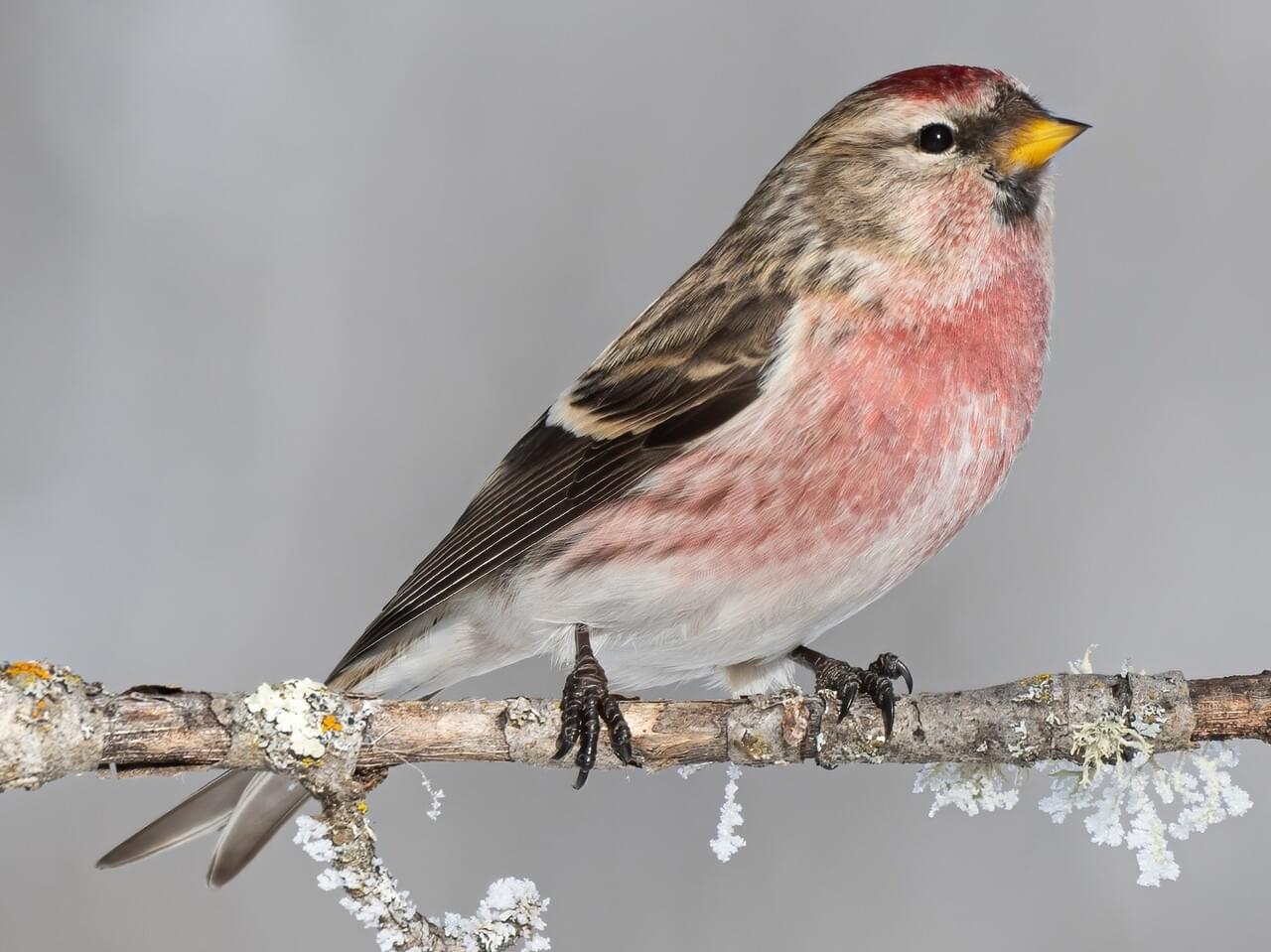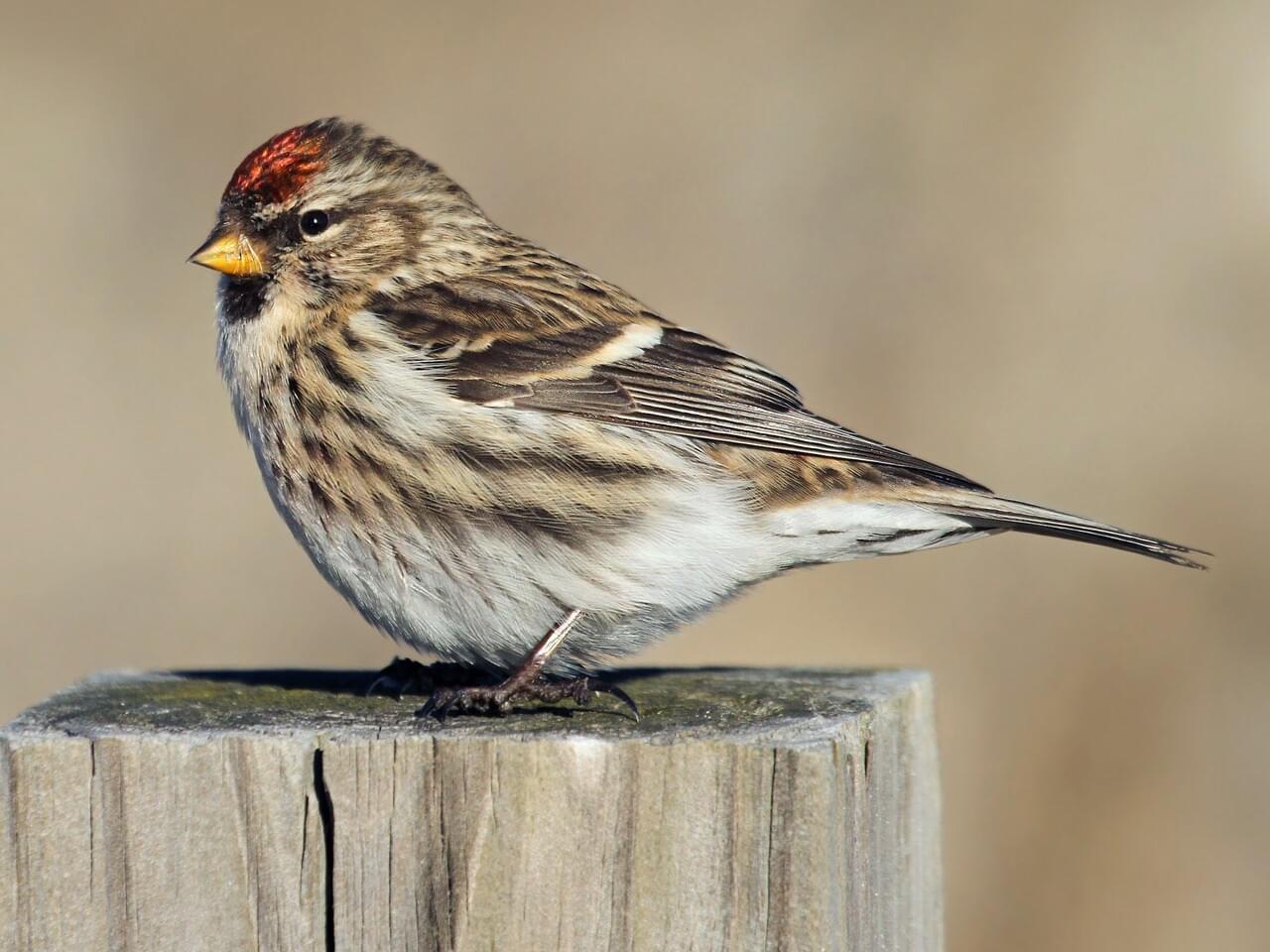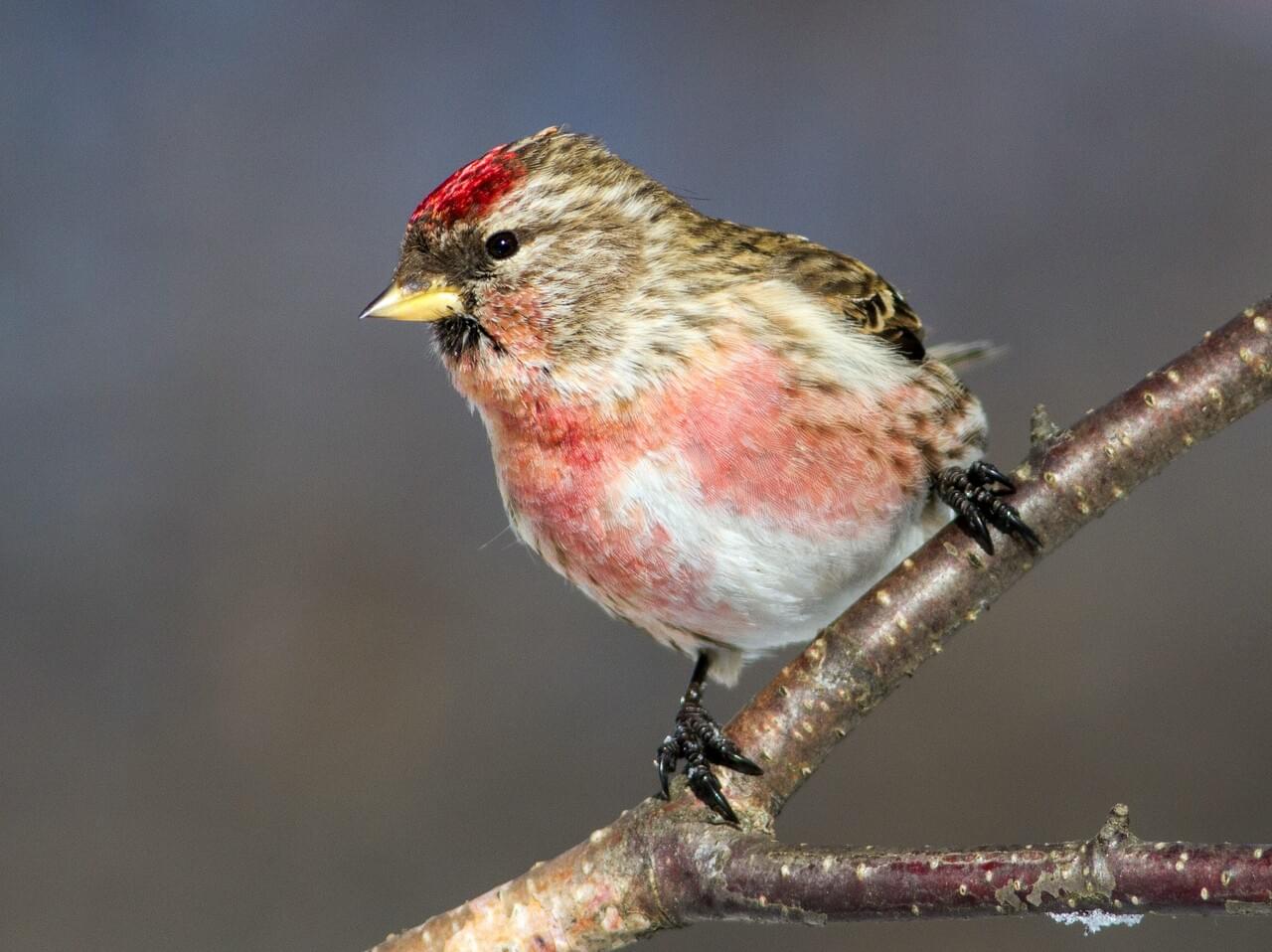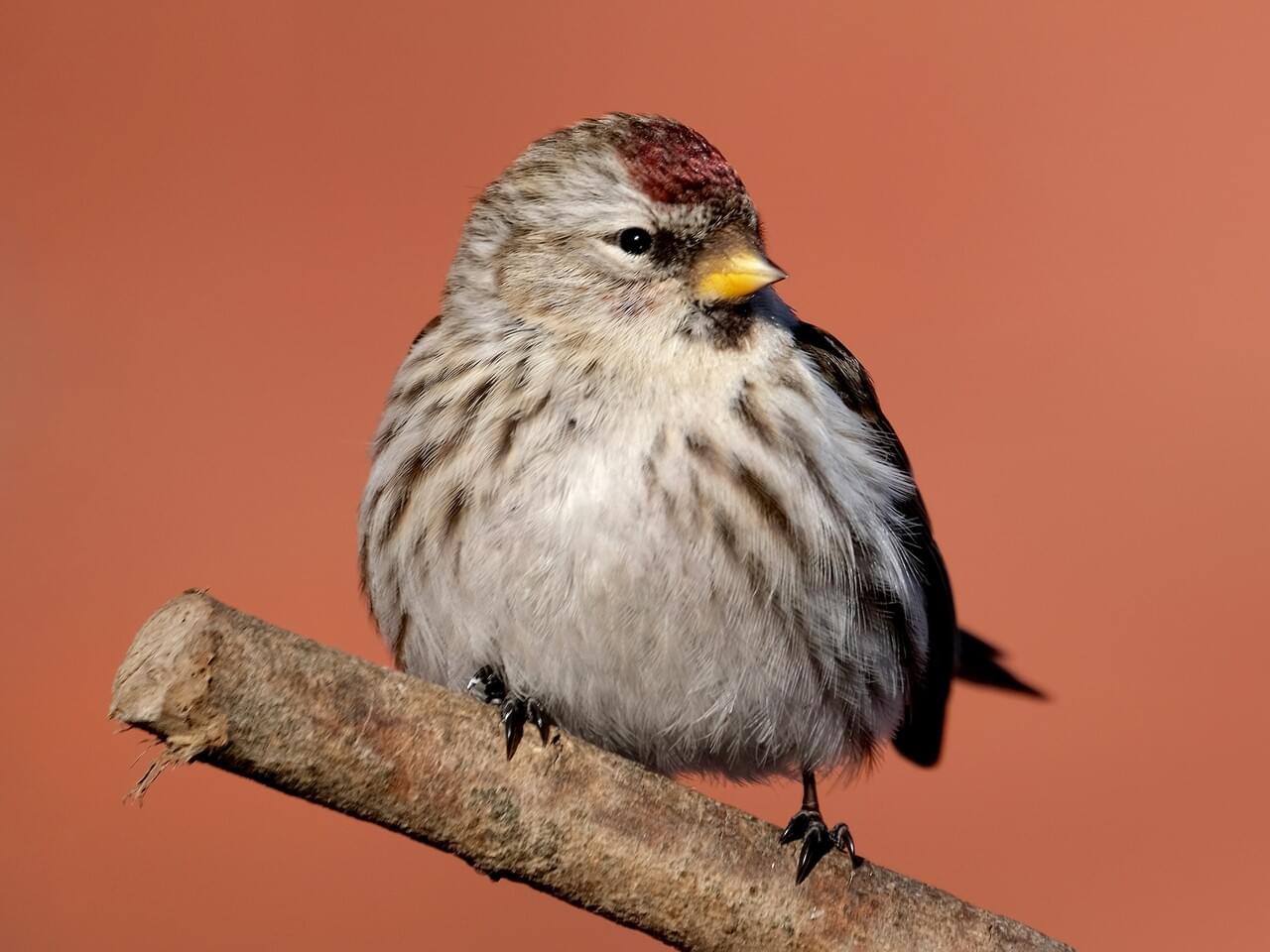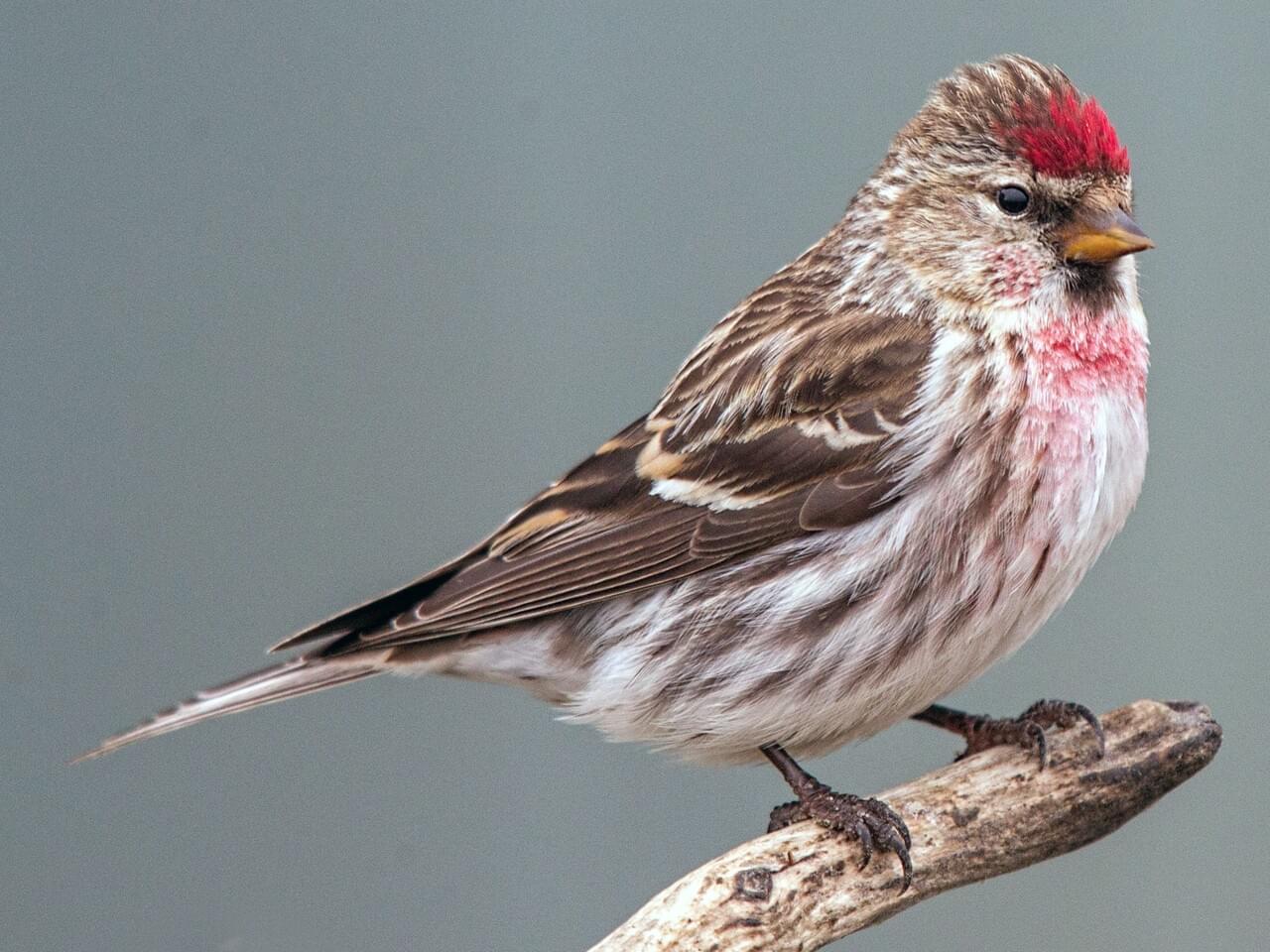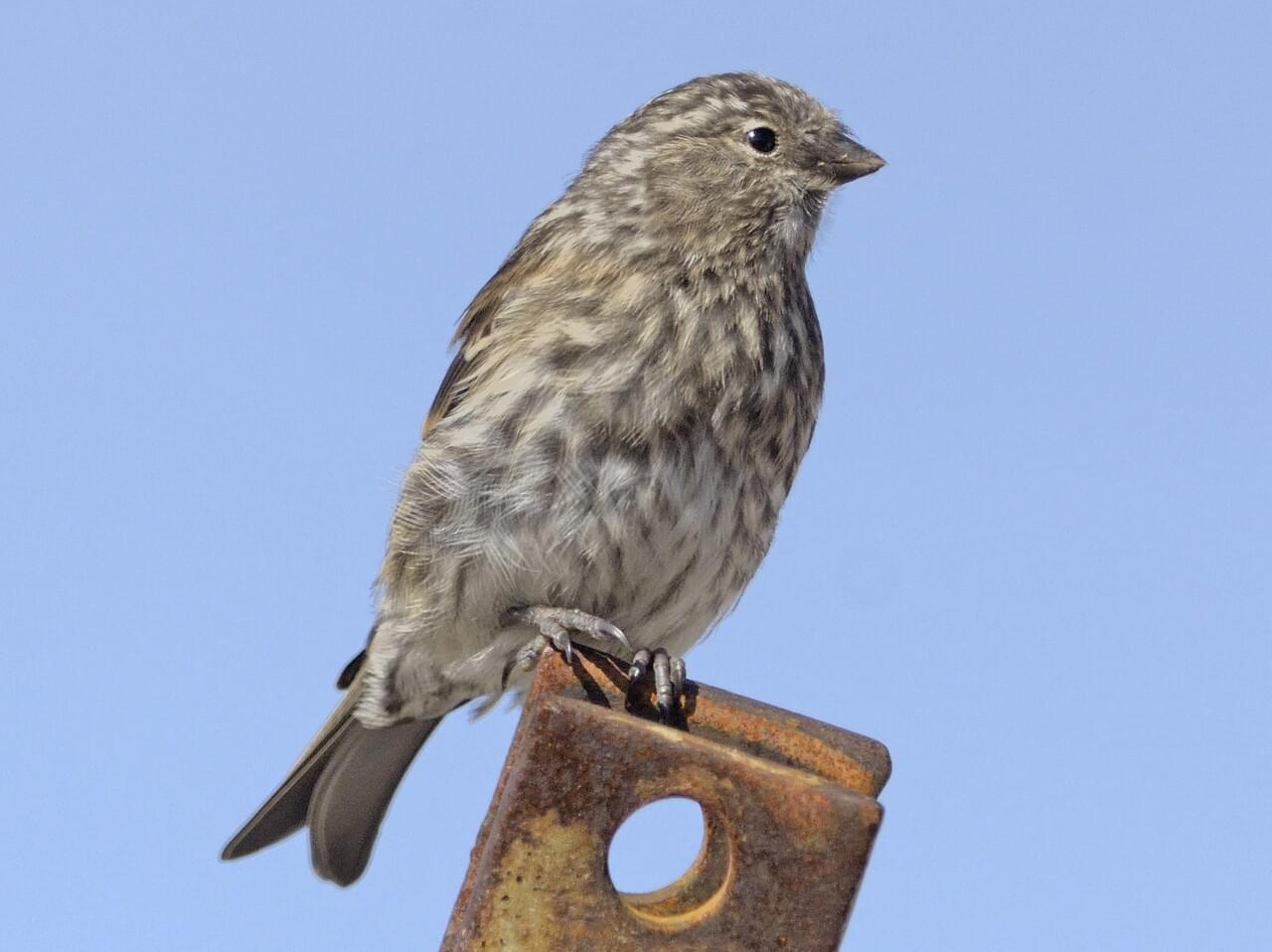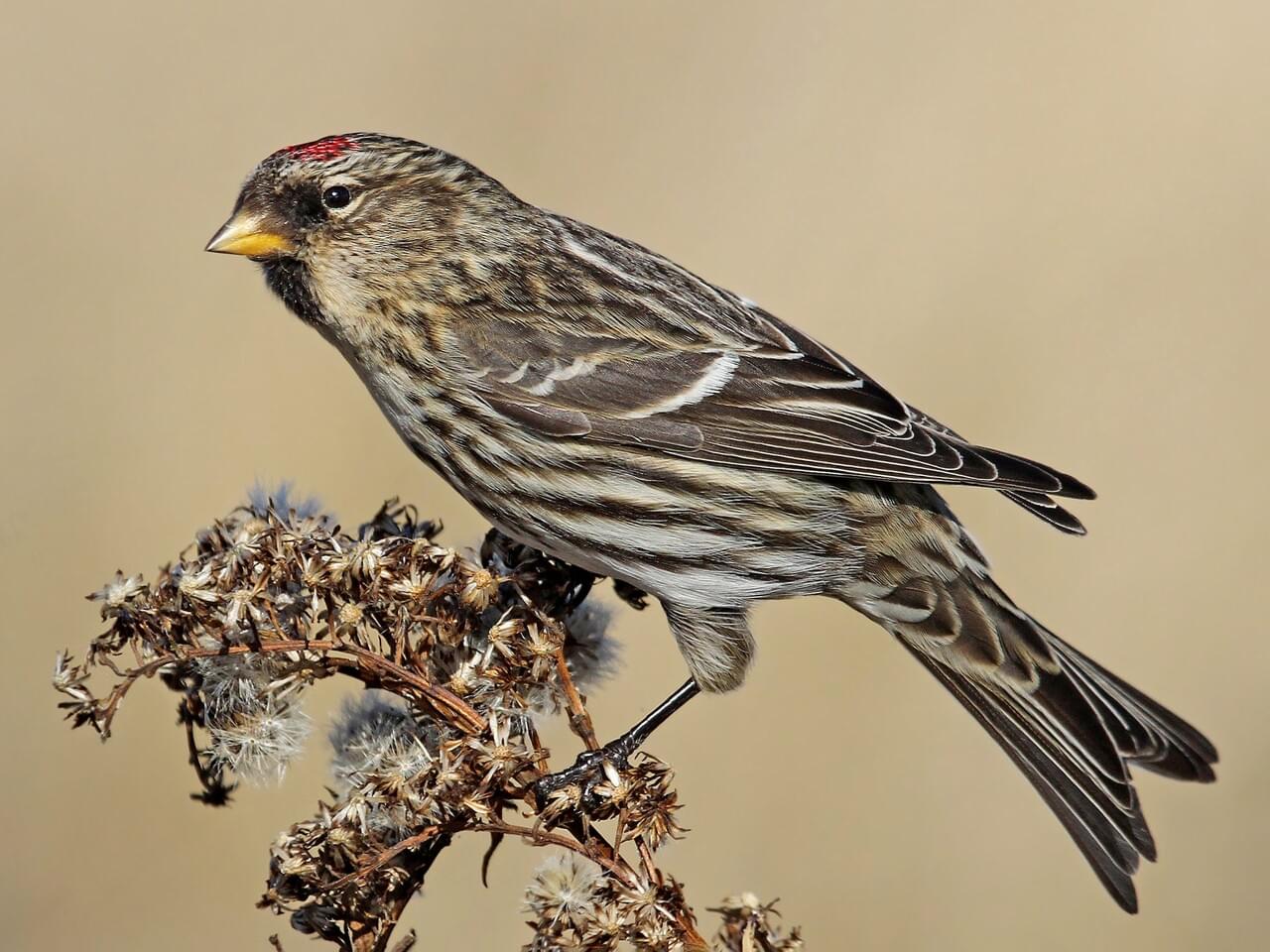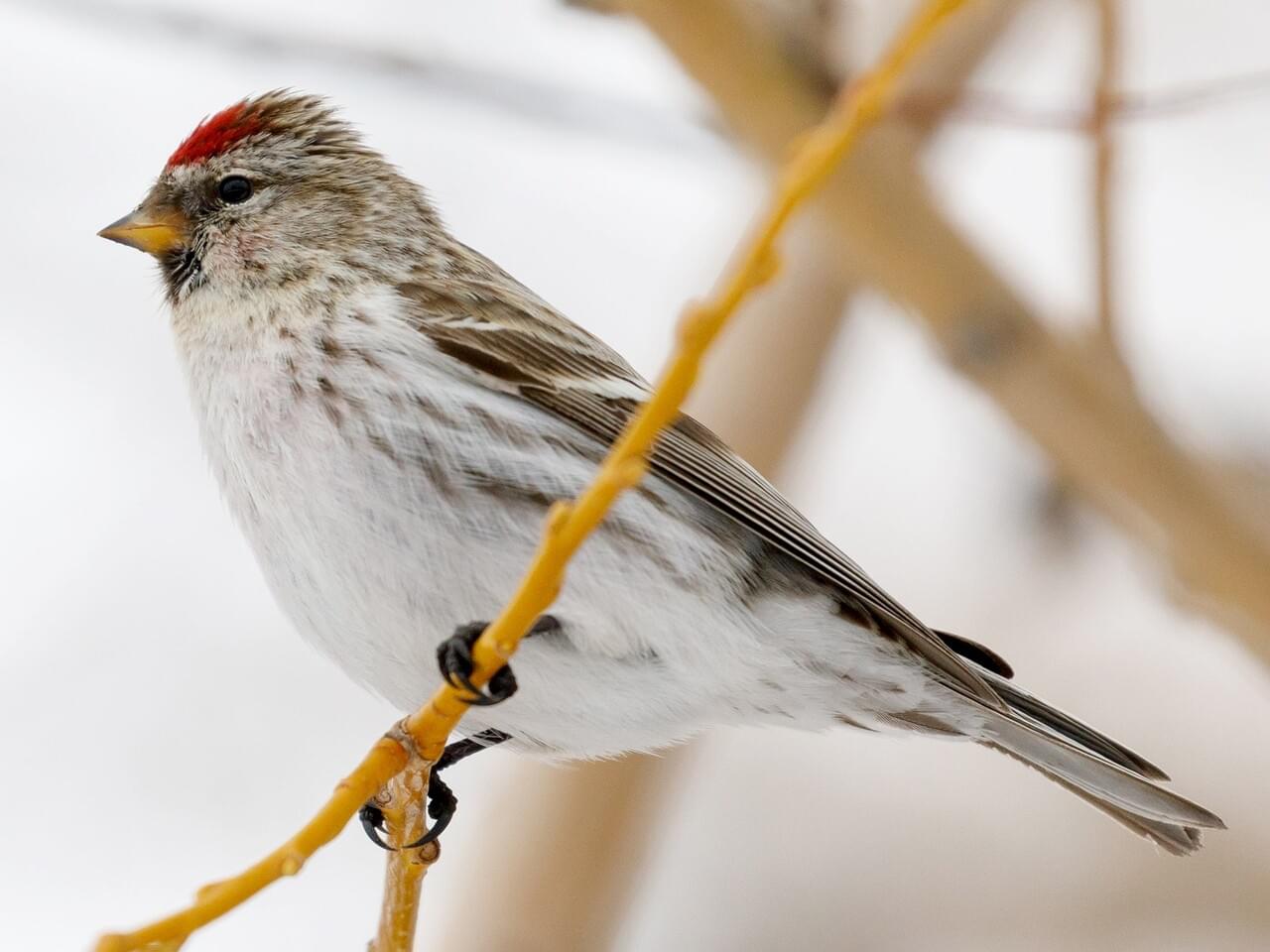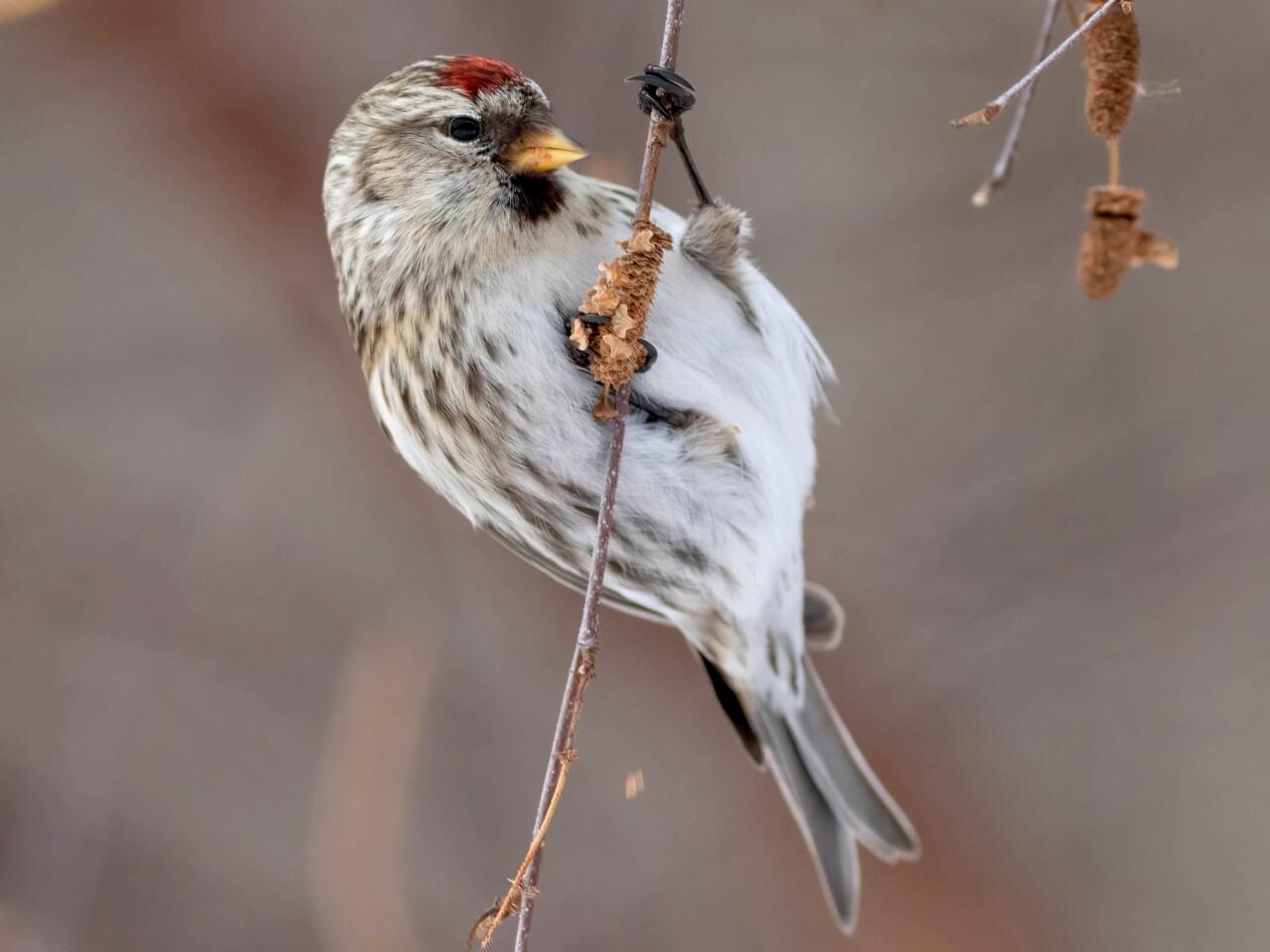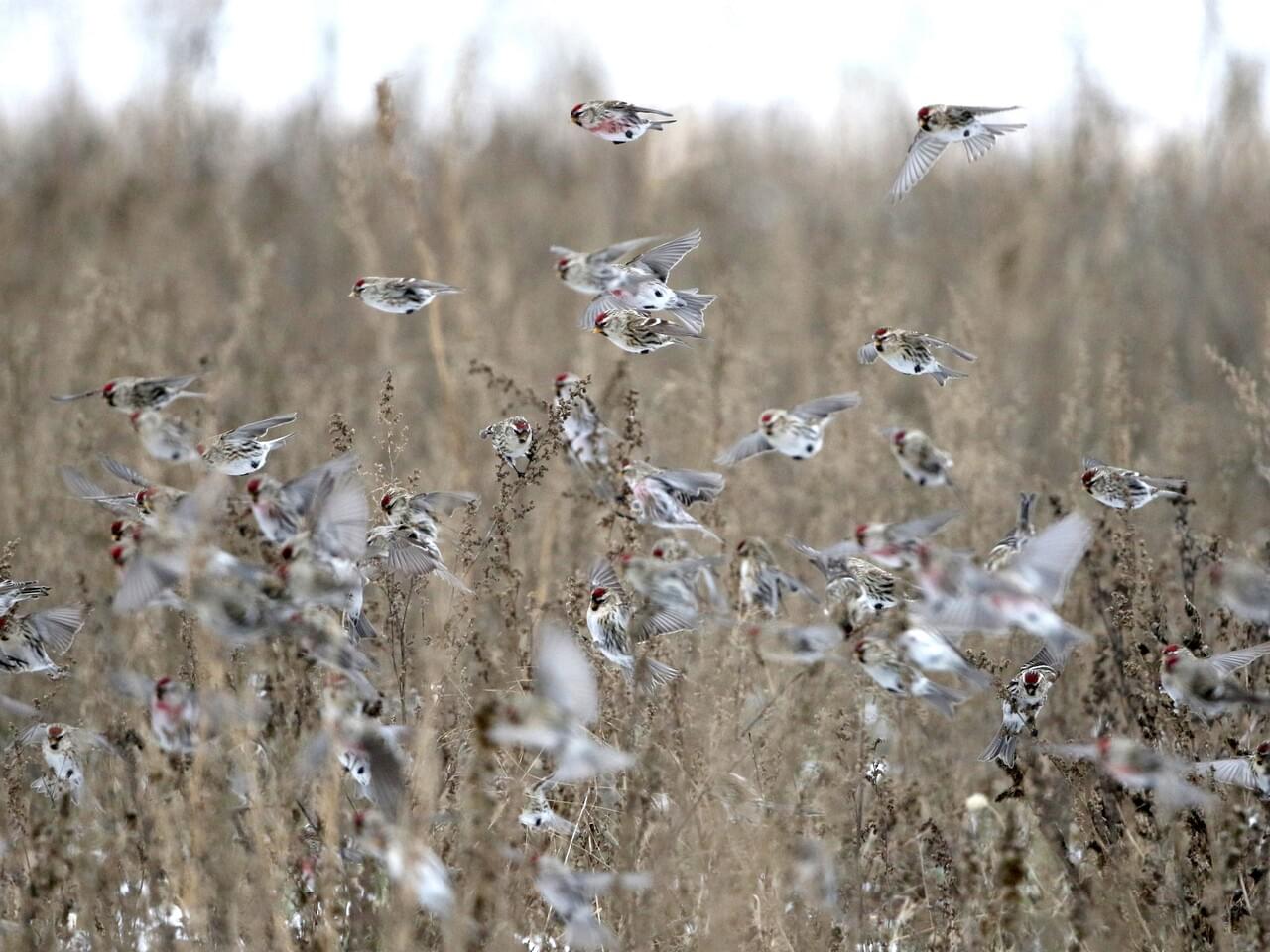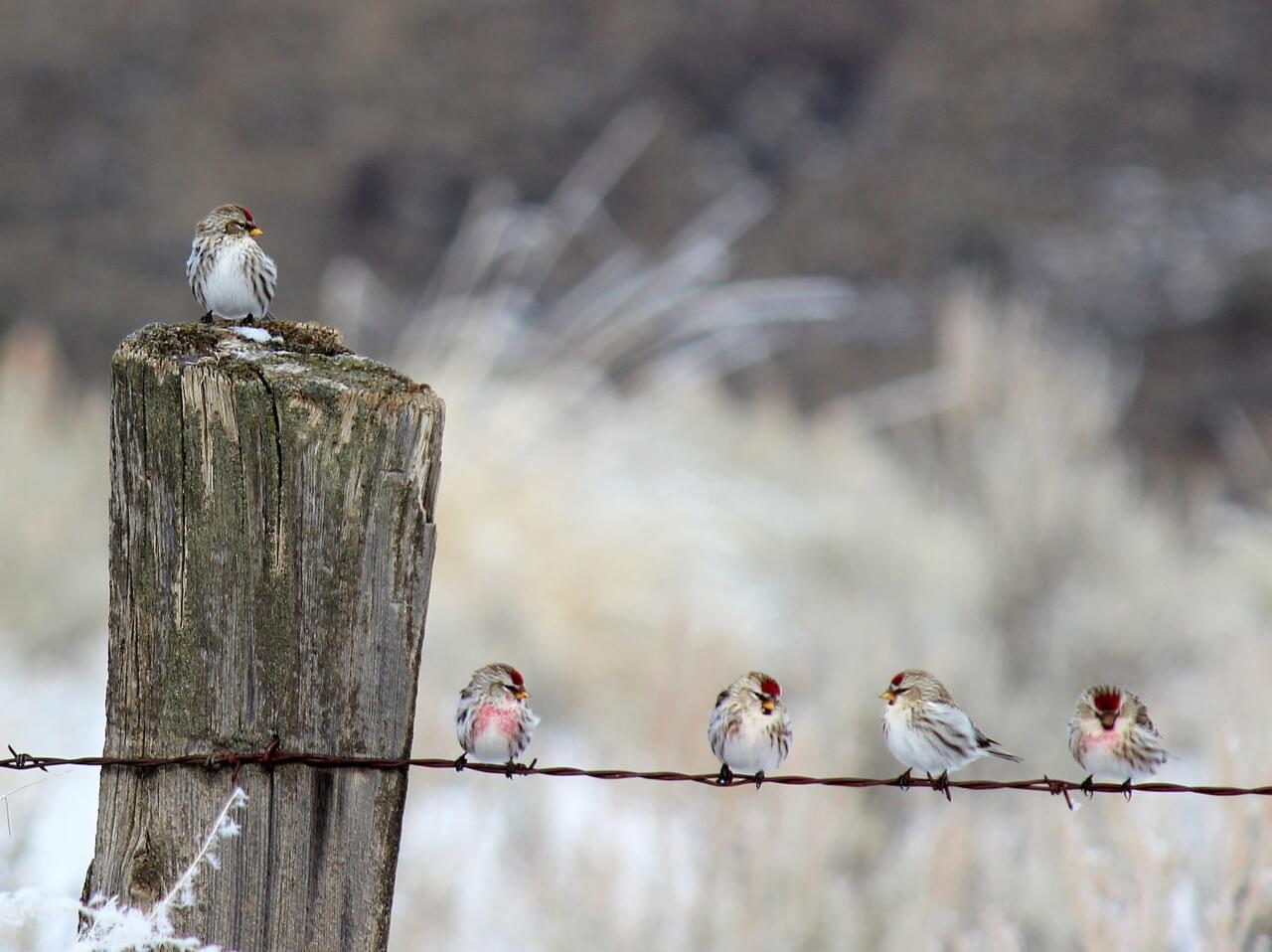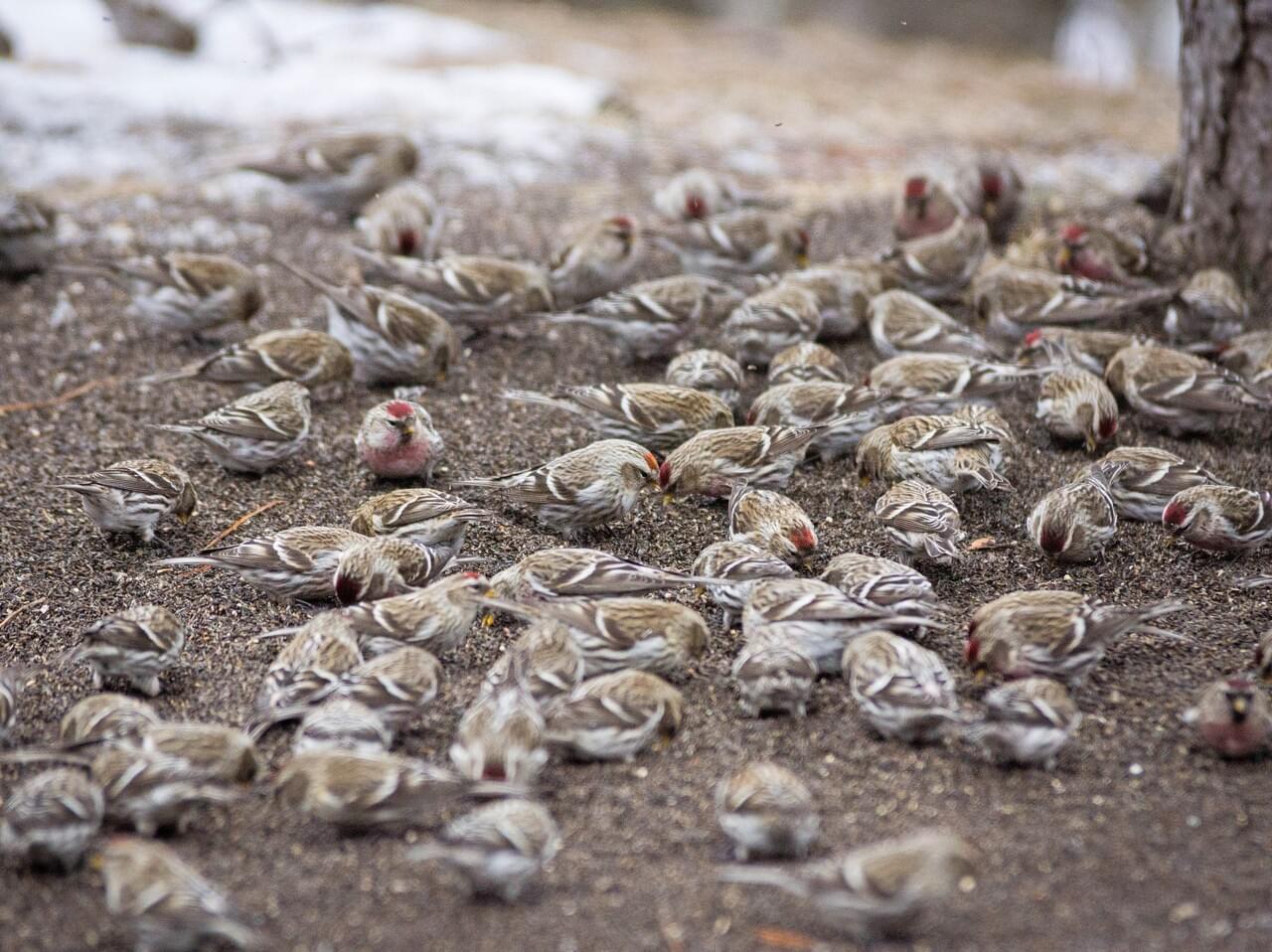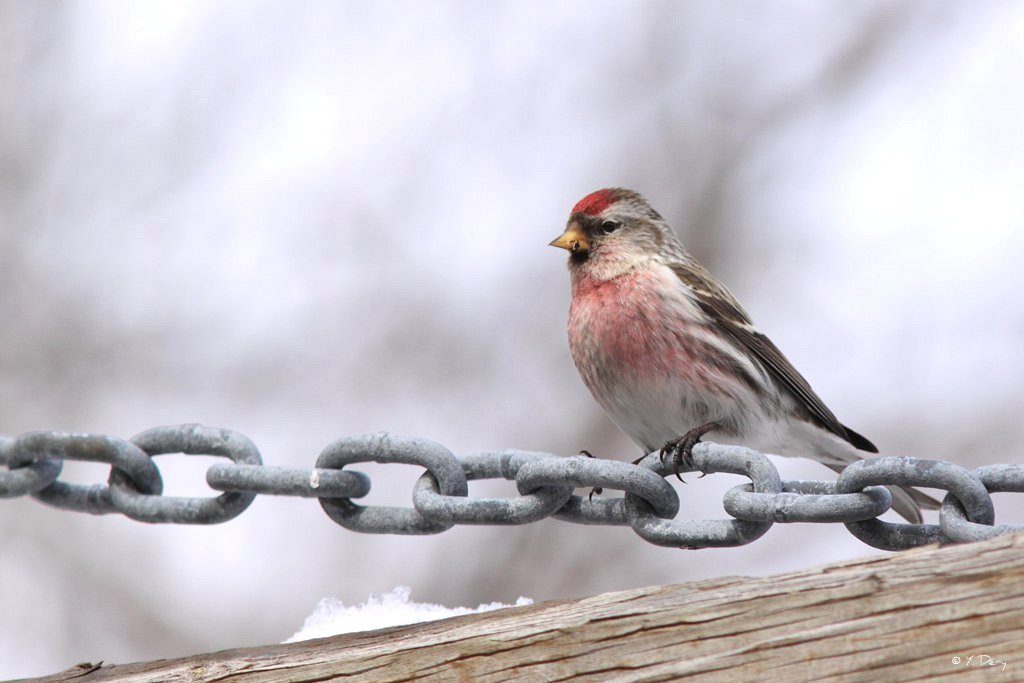 Photo ©
Yves Déry
Photo ©
Yves Déry
Common Redpoll
Regional Species
As energetic as their electric zapping call notes would suggest, Common Redpolls are active foragers that travel in busy flocks. Look for them feeding on catkins in birch trees or visiting feeders in winter. These small finches of the arctic tundra and boreal forest migrate erratically, and they occasionally show up in large numbers as far south as the central U.S. During such irruption years, redpolls often congregate at bird feeders (particularly thistle or nyjer seed), allowing delightfully close looks.
Range
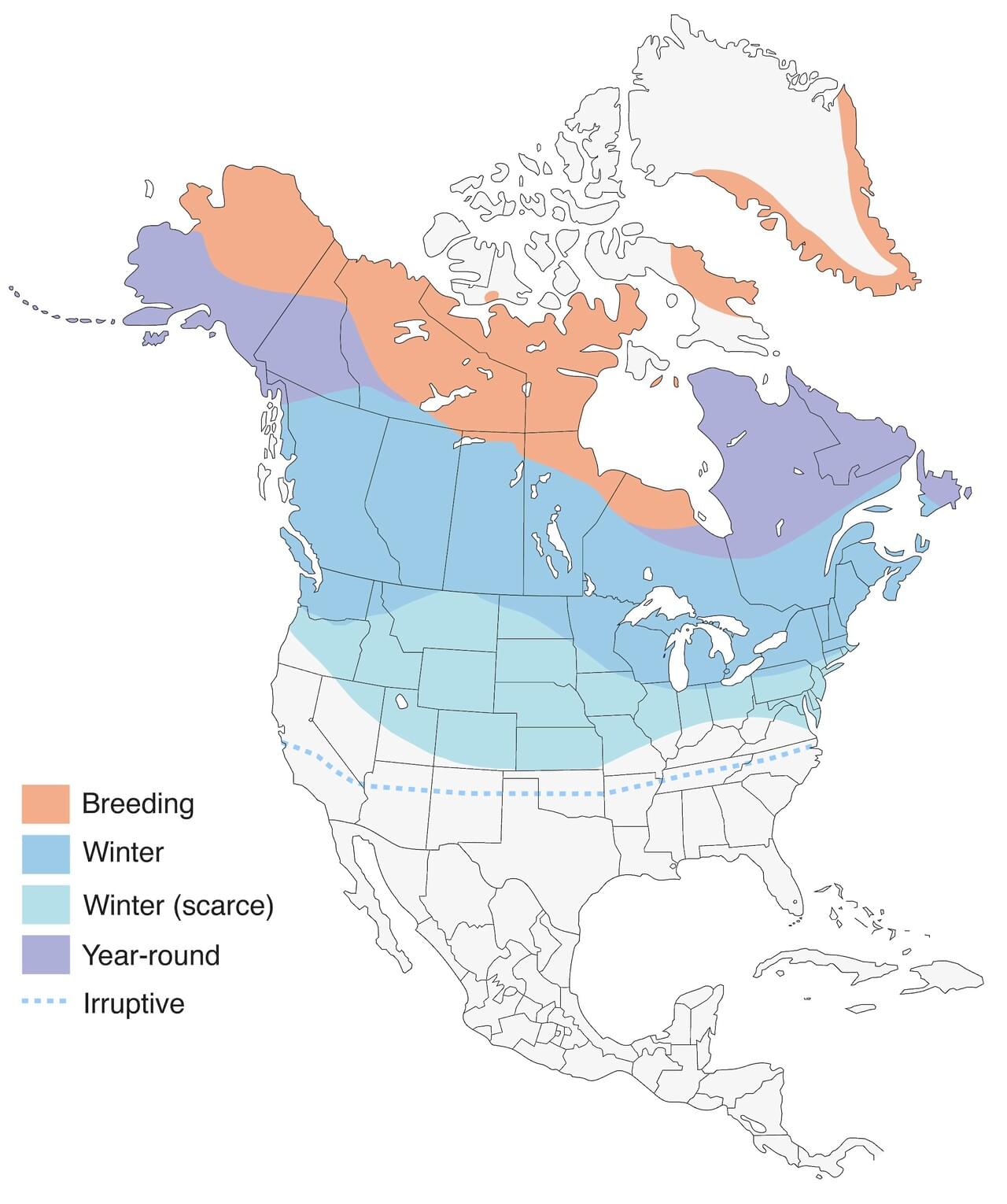
Habitat
Common Redpolls breed worldwide in the far northern latitudes, in open woods of pine, spruce, alder, birch, and willow up to about 5,000 feet elevation. In the essentially treeless tundra they find hollows and shelters where deciduous shrubs or conifers can gain a foothold. They also live around towns. Most people get to see them in winter, when redpolls move south. In their winter range, which can be extremely variable as the birds seek unpredictable food sources, redpolls occur in open woodlands, scrubby and weedy fields, and backyard feeders.
Food
Common Redpolls eat mainly small seeds, typically of trees such as birch, willow, alder, spruces, and pines, but also of grasses, sedges, and wildflowers such as buttercups and mustards, and occasional berries. During summer they also eat considerable numbers of spiders and insects. Winter diet is largely birch and alder seeds or, at feeders, millet and thistle or nyjer seed.
Behavior
Common Redpolls are energetic little birds that forage in flocks, gleaning, fluttering, or hanging upside down in the farthest tips of tree branches. Like many finches, they have an undulating, up-and-down pattern when they fly. To keep order in flocks, redpolls have several ways of indicating their intentions. When quarreling with flockmates, a redpoll fluffs its plumage, faces its adversary, and opens its bill, sometimes jutting its chin to display the black face patch. Males court females but flying in slow circles while calling and singing. Males may feed females during courtship. You may see small flocks of this social species even during the breeding season; during migration they may group into the thousands. In winter, some redpolls roost in tunnels under the snow, where the snowpack provides insulation and stays much warmer than the night air.
Nesting
The female builds the nest on a foundation of small twigs laid across thin branches. She makes the nest from grasses, fine twigs, roots, and tree moss. She lines the nest with a thick layer of ptarmigan or Spruce Grouse feathers, or with hair, lemming fur, wool, or downy plant material. The finished nest is up to 4 inches across with a nest cup of about 2.5 inches diameter and 2 inches deep. Redpolls may take material from old nests to make new ones, but typically do not reuse old nests.
Appearance
Typical Sound

© Mike Andersen / Macaulay Library
Size & Shape
Common Redpolls are small songbirds with small heads and small, pointed, seed-eating bills. The tail is short with a small notch at the tip.
Color Pattern
Common Redpolls are brown and white birds with heavily streaked sides. Look for a small red forehead patch, black feathering around a yellow bill, and two white wingbars. Males have a pale red vest on the chest and upper flanks.
Plumage Photos
Similar Species
Hoary Redpolls live even farther north than Common Redpolls; when you see them, they are likely to be with flocks of Common Redpolls. Hoaries are paler overall than Common Redpolls, with whiter rumps, less dark flank streaking, and even smaller bills. Pine Siskins are darker overall and more heavily streaked, with almost no white visible; they also have longer bills than redpolls. American Goldfinches in winter are more smoothly patterned in brown and yellow tones, with darker wings and bold wingbars. They lack the streaking and the red forehead of Common Redpolls. House Finches, Purple Finches, and Cassin’s Finches are all larger than Common Redpolls, have much heavier bills, and lack bold wingbars; unlike the redpolls’ small patches of red, the males of these finches have red covering the whole crown and chest.
Did you know?!
- Animal behaviorists commonly test an animal’s intelligence by seeing if it can pull in a string to get at a hanging piece of food. Common Redpolls pass this test with no trouble. They’ve also been seen shaking the seeds out of birch catkins, then dropping to the ground to pick them up from the flat snow surface.
- A few banding records have shown that some Common Redpolls are incredibly wide ranging. Among them, a bird banded in Michigan was recovered in Siberia; others in Alaska have been recovered in the eastern U.S., and a redpoll banded in Belgium was found 2 years later in China.
